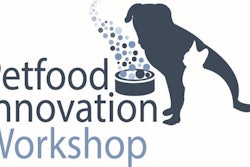A focus on pet food safety as a common cause and a commitment to providing comfort and nutrition to pets create a very compelling story for the pet food industry to tell consumers, says Cathy Enright, president of the Pet Food Institute (PFI). She believes now is the perfect time for PFI to help its member companies get that story out, not only to pet owners but also to governing bodies and the global community.
Enright graciously agreed to an interview during arguably one of the busiest times of her five-month tenure with PFI: the 2015 Feed and Pet Food Joint Conference, hosted by PFI and the National Grain & Feed Association September 29-October 1 in Columbus, Ohio, USA. During that meeting, Enright also met with PFI’s board of directors.
One of Enright’s first tasks after becoming president in April was to engage in strategic planning, a first for PFI, she said. From that process, she determined two areas that the organization, and industry, need to focus on most: state governmental affairs and communication. Regarding the former, Enright envisions PFI paying more attention to potential legislation involving pet food: “It’s been clear to us for a couple of years that there are legislative efforts, regulatory efforts, specific to pet foods, and it’s clear that we have to act.”
The emphasis on communications arises naturally, Enright indicated, from the high interest in pets and what they eat, along with the many misconceptions about pet foods and pet nutrition. “There’s a lot of misinformation on social media,” she said. “How are we going to separate ourselves from the noise, get the facts out, get our stories told?”
To that end, Enright believes PFI and the industry are seizing the perfect opportunity now. “It’s really smart of the industry to take a look at the landscape of regulatory uncertainty, both domestically and internationally; of statehouse activity focused on pet food products; and of the dialogue that’s taking place in the social media space; and wanting to do something about it. Recognizing that we have an opportunity here to invest in activities that bring transparency.”
When I pointed out that pet food companies have traditionally preferred to keep things close to the vest and that has hurt them in terms of public perception and trust, Enright agreed. “I think it's fair to say in general that corporate America is rather private. But for companies with consumer-facing brands, or industries that have generated consumer interest, that is a luxury they know they no longer have.” It’s the cost of doing business, she added.
“And quite frankly, if I look at all the various industries I’ve worked in, it’s not like they’re hiding. It’s just that, they’re making product, right? It’s another investment,” she explained. “They’d rather invest in food safety personnel than they would in marketing to a target audience. But I think it’s fair to say that most 21st-century companies with a consumer-facing brand, and therefore also they’re industry representatives, recognize that you can’t go back. That conversation on social media is here to stay.”
So, what should the industry be telling pet owners and other interested parties? As an analogy, Enright talked about her response when she is asked—as she often is now (and as most of us who work in the industry are)—what the best pet food is. “I say, look for complete and balanced, and then the components in the pet food (proteins, carbs, fiber, fats and oils) can be a range. Look for complete and balanced, know that the product falls within that range, and then choose what you like. If you prefer a higher protein, or a higher carb, diet, then choose that. If you trust one company over others, then choose that. But don’t worry about the nutrition component, the full nutrition package.
“The whole beauty of that argument is, you know what, safety is not an issue,” Enright continued. “You look for complete and balanced, then nutrition’s not an issue, safety’s not an issue, regulated product’s not an issue. Then the choice is yours. So you’re starting from a pretty high level.” If consumers understood and accepted this, she believes they would have more confidence going in. “They’d bring confidence into their choice, then the world is their oyster. Then they can choose what they want.”
Better explaining the “complete and balanced” concept and what that means in terms of a pet food’s safety and nutrition is just one important message to communicate, Enright said. (And note that PFI has a task force working on a proposed new pet food label format that would help—watch for more information on that soon.)
The other message is about pet food companies’ commitment to pets. “While companies may be manufacturers, a company’s commitment is to providing healthy food to help cats and dogs live happy, long lives,” she explained. “Yes, they would like to make a profit, but the commitment—five months in, I can tell you, I’ve heard it, I’ve seen it—never doubt that, that is the principle commitment for all the pet food manufacturers, I would say whether they’re PFI members or not. You get into this business because you enjoy providing comfort and nutrition.”
















